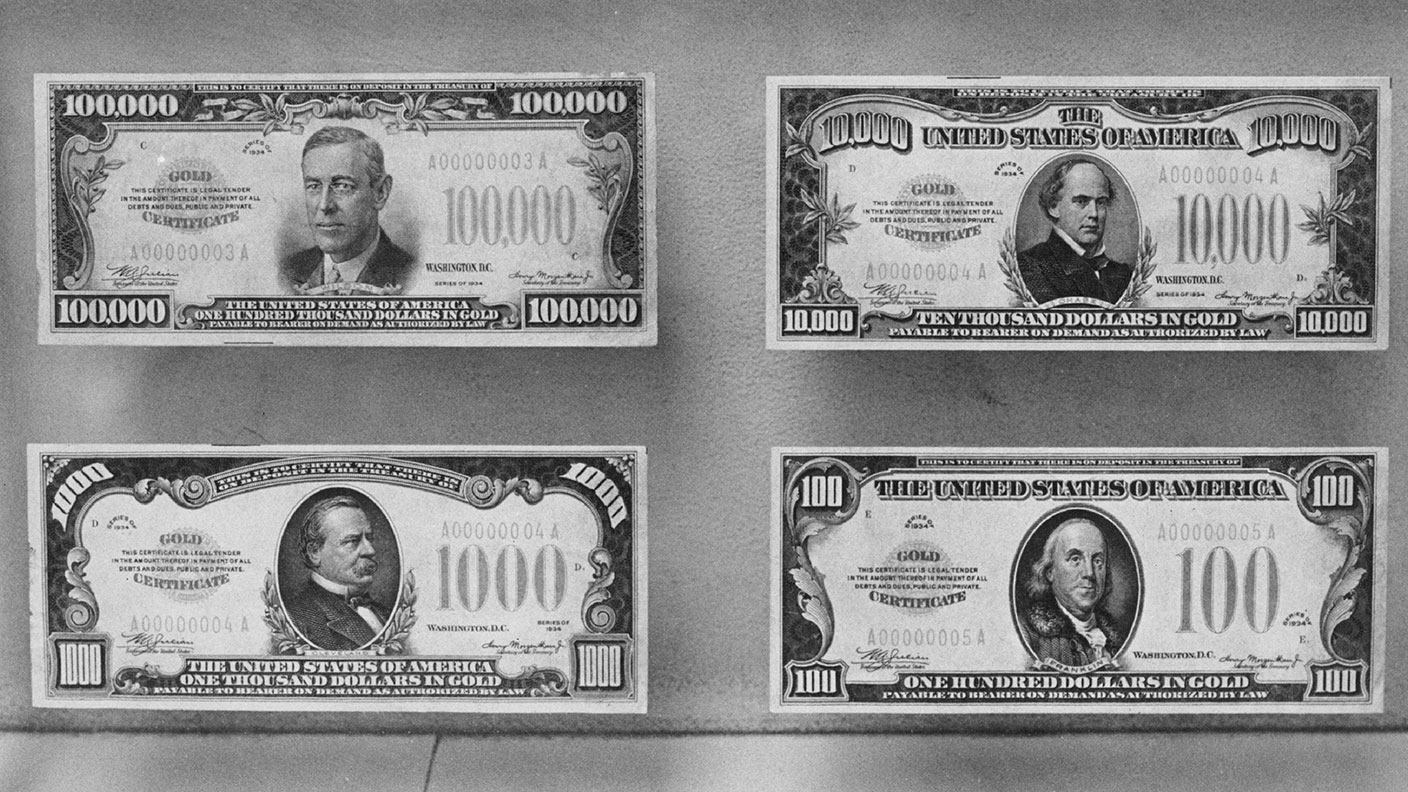13 November 1865: US issues its first gold certificates
The effects of loose money-printing and counterfeit notes led the US to issue its first ‘gold certificates’ – a form of paper currency backed by gold – on this day in 1865.


Americans began to move out west in the first half of the 19th century. Banks started printing their own money to fund land purchases, and that quickly led to two problems: loose money-printing had a volatile effect on prices, and it became increasingly hard to tell what was counterfeit from what wasn't.
To tackle these problems, the government decreed in the 1830s that it would only accept transactions in gold and silver. But of course, lugging metals around is nobody's idea of fun. So in 1863, Congress paved the way for the first “gold certificates” to be printed two years later, in November 1865.
A gold certificate was, in effect, a form of paper currency backed by gold – although not entirely. The Treasury was allowed to issue $120 in gold certificates for every $100-worth of gold it held in its vaults.
MoneyWeek
Subscribe to MoneyWeek today and get your first six magazine issues absolutely FREE

Sign up to Money Morning
Don't miss the latest investment and personal finances news, market analysis, plus money-saving tips with our free twice-daily newsletter
Don't miss the latest investment and personal finances news, market analysis, plus money-saving tips with our free twice-daily newsletter
The first gold certificates featured an American eagle, while later issues displayed portraits of presidents. The design on the reverse of the notes was yellow and orange, and so the certificates became known as “goldbacks”. There were nine issues in total, with denominations ranging from $10 to $10,000. However, in 1934, there was an additional issue.
During the Great Depression of the early 1930s, the economy was in a rut. President Franklin D Roosevelt believed that ordinary people stashing gold away was holding back the recovery. So, in 1933, he made the "hoarding of gold coin, gold bullion and gold certificates" illegal. But not for the government. The following year, the highest-ever denomination gold certificate was printed, with a value of $100,000.
Today, gold certificates from the early years are much sought after by collectors, who can rest easy it's no longer illegal to own them. But future collectors will be disappointed. While the US Treasury still issues gold certificates for "government-owned gold", these now take the form of electronic book-entries.
Get the latest financial news, insights and expert analysis from our award-winning MoneyWeek team, to help you understand what really matters when it comes to your finances.

-
 The shape of yields to come
The shape of yields to comeCentral banks are likely to buy up short-term bonds to keep debt costs down for governments
-
 The sad decline of investment clubs – and what comes next
The sad decline of investment clubs – and what comes nextOpinion Financial regulation and rising costs are killing off investment clubs that once used to be an enjoyable hobby, says David Prosser
-
 31 August 1957: the Federation of Malaya declares independence from the UK
31 August 1957: the Federation of Malaya declares independence from the UKFeatures On this day in 1957, after ten years of preparation, the Federation of Malaya became an independent nation.
-
 13 April 1960: the first satellite navigation system is launched
13 April 1960: the first satellite navigation system is launchedFeatures On this day in 1960, Nasa sent the Transit 1B satellite into orbit to provide positioning for the US Navy’s fleet of Polaris ballistic missile submarines.
-
 9 April 1838: National Gallery opens in Trafalgar Square
9 April 1838: National Gallery opens in Trafalgar SquareFeatures On this day in 1838, William Wilkins’ new National Gallery building in Trafalgar Square opened to the public.
-
3 March 1962: British Antarctic Territory is created
Features On this day in 1962, Britain formed the British Antarctic Territory administered from the Falkland Islands.
-
10 March 2000: the dotcom bubble peaks
Features Tech mania fanned by the dawning of the internet age inflated the dotcom bubble to maximum extent, on this day in 2000.
-
9 March 1776: Adam Smith publishes 'The Wealth of Nations'
Features On this day in 1776, Adam Smith, the “father of modern economics”, published his hugely influential book The Wealth of Nations.
-
 8 March 1817: the New York Stock Exchange is formed
8 March 1817: the New York Stock Exchange is formedFeatures On this day in 1817, a group of brokers moved out of a New York coffee house to form what would become the biggest stock exchange in the world.
-
7 March 1969: Queen Elizabeth II officially opens the Victoria Line
Features On this day in 1969, Queen Elizabeth II took only her second trip on the tube to officially open the underground’s newest line – the Victoria Line.